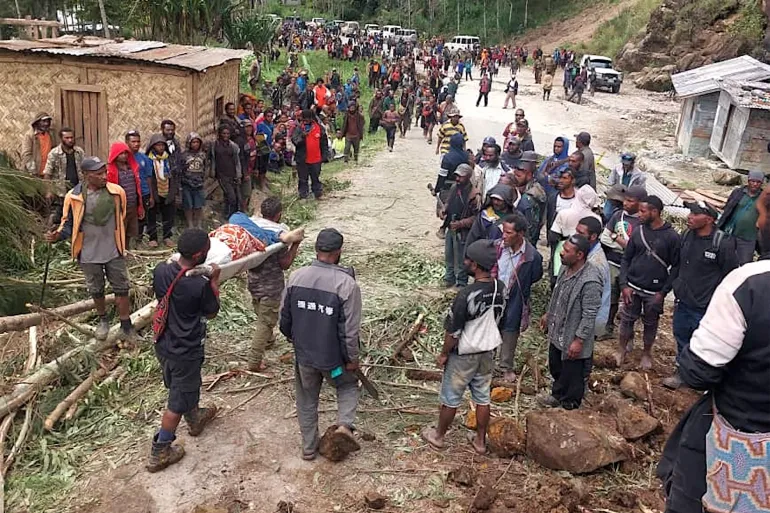An official from Papua New Guinea national disaster centre wrote to the United Nations that more than 2,000 people were buried alive in Friday’s landslip.
According to the Papua New Guinea national disaster centre, a landslip in a rural village in the country’s north killed almost 2,000 people on Friday.
Also Read NSE Decreases tick size to one Paisa: Over 1,300 Stocks will be Affected.
“The landslip buried more than 2,000 people alive, destroyed buildings and food gardens, and had a significant impact on the country’s economic lifeline,” a national disaster centre official told the United Nations in a letter.

Remaining residents are being evacuated as the region remains high-risk amid forecasts of further rain.
“The ground is also quite unstable at the moment and it is at risk of triggering further landslide,” said Justine McMahon, the country co-ordinator of Care Australia, one of the humanitarian aid agencies on the ground.
“We’ve decided to stay out for now to allow the authorities time to properly assess the situation to conduct the rescue and recovery operations.”
Earlier, an official for the UN’s migration agency in the country had also described to the BBC the difficulties around the rescue.
Serhan Aktoprak from the International Organization for Migration said there were a number of challenges facing teams trying to recover bodies, including reluctance by some grieving relatives to let heavy machinery near their loved ones.
Instead, he said, “people are using digging sticks, spades, large agricultural forks to remove the bodies buried under the soil”.
Also Read Modi, Shah, and Fadnavis collaborated to Defeat Gadkari in Nagpur, According to Sanjay Raut.
Debris from the landslide, which includes large boulders, trees and displaced soil.
Crews at the scene also say rescue efforts are being hindered by major damage to the sole road leading to the town. The landslide has damaged a length of about 200m (650ft), Ms McMahon said.
The Mount Mungalo landslide occurred in the highlands of Enga, in the north of the island nation.
Local officials and reporters have attributed the mountain’s collapse to weeks of heavy rain and other wet conditions in the area.
















Reader Interactions